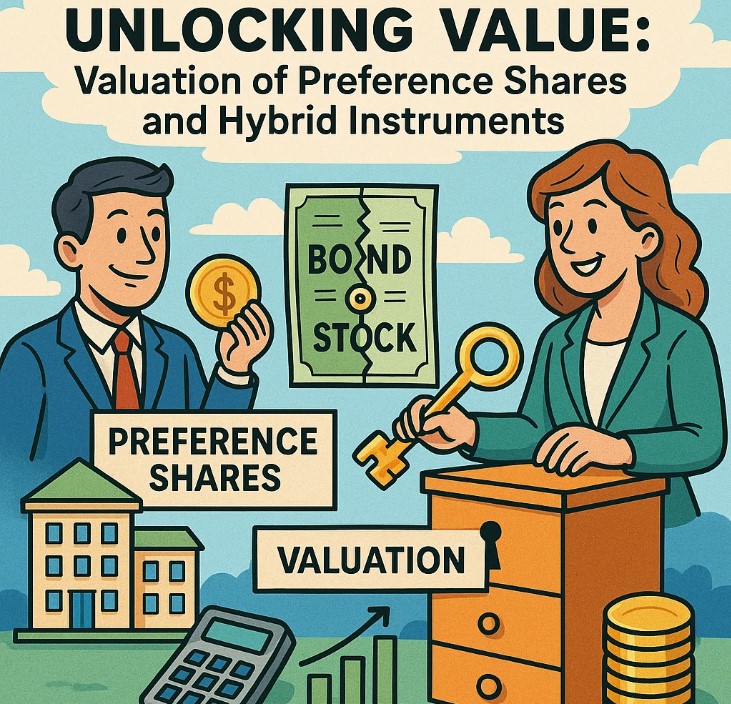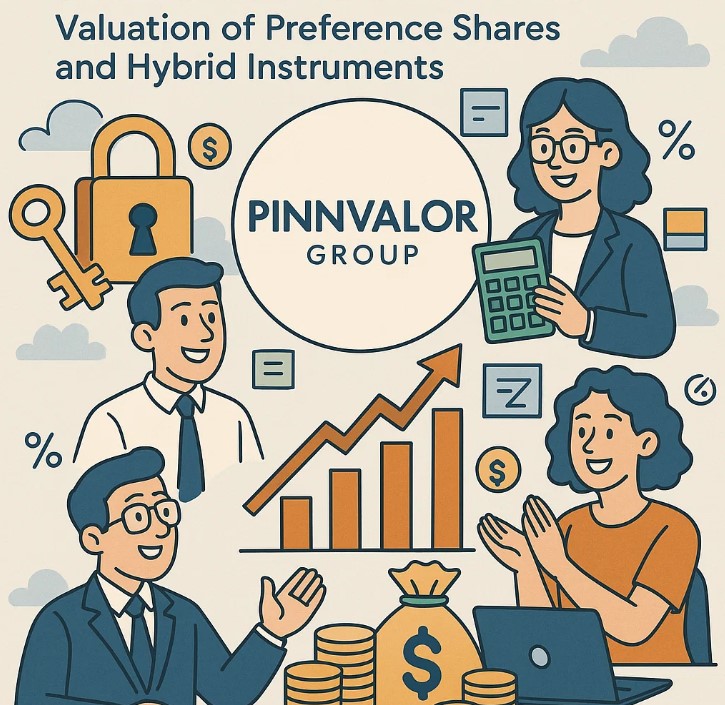
Unlocking Value: Valuation of Preference Shares and Hybrid Instruments
In the dynamic world of finance, not all investments fit neatly into the “equity” or “debt” category. Preference shares and hybrid instruments occupy a unique middle ground, offering features of both. Their valuation is crucial for corporate finance professionals, investors, and analysts, as these securities often form a key part of capital structure and strategic funding decisions.
Understanding how to value them requires a blend of equity valuation techniques, debt pricing principles, and a deep awareness of contractual terms.
How do you balance income certainty and equity upside when valuing hybrid securities?
FinanceInsights show that mastering their valuation is key to smarter investments and optimized capital structures.
What Are Preference Shares?
Preference shares are equity instruments that typically provide:
- A fixed dividend rate (like debt interest payments)
- Preference in dividend payments over equity shareholders
- Priority in repayment during liquidation
They can be redeemable, convertible, or participating, and each type requires a slightly different valuation approach.
What Are Hybrid Instruments?
Hybrid instruments combine characteristics of debt and equity. Common examples include:
- Convertible Debentures
- Warrants attached to debt
- Perpetual Bonds
- Convertible Preference Shares
They offer flexible financing options for issuers and a mix of income stability and potential capital gains for investors.
Why Valuation Matters
Valuing these instruments is essential for:
- Investment decisions – to determine fair market value before buying or selling
- Corporate restructuring – for mergers, acquisitions, and buybacks
- Compliance – to meet accounting and regulatory requirements
- Strategic funding – to optimize capital structure
Valuation Methods for Preference Shares
1. For Redeemable Preference Shares
The valuation is similar to debt instruments. The formula is the present value (PV) of expected dividends plus the PV of the redemption value.
Formula:
Value = ∑t=1n D / (1 + r)t + RV / (1 + r)n
Where:
- D = Fixed dividend
- RV = Redemption value
- r = Required rate of return
- n = Years to redemption
2. For Irredeemable (Perpetual) Preference Shares
Here, valuation is based on a perpetuity model.
Formula:
Value = D / r
3. For Convertible Preference Shares
The value is the higher of:
- Value as preference share (income-based)
- Value if converted to equity (market-based)

Valuation of Hybrid Instruments
A. Convertible Debentures
Valued as the sum of:
- The present value of interest payments (bond value)
- The value of the equity conversion option (using option pricing models like Black-Scholes)
B. Warrants
Warrants are valued using option pricing models, factoring in:
- Exercise price
- Current share price
- Time to expiry
- Volatility
C. Perpetual Bonds
Valued using the same perpetuity formula as irredeemable preference shares:
Value = Coupon / r
Key Factors Influencing Valuation
- Dividend/Coupon Rate – Higher fixed returns generally increase value
- Market Interest Rates – Inverse relationship with valuation
- Credit Rating – Better ratings reduce risk and increase value
- Redemption/Conversion Terms – More favorable terms to investors push valuations higher
- Market Volatility – Directly affects option-related hybrid instruments
Challenges in Valuation
- Complex contractual terms
- Changing interest rate environments
- Uncertain future earnings for convertible securities
- Regulatory constraints affecting redemption or conversion
Conclusion
Valuation of preference shares and hybrid instruments blends the principles of equity and debt valuation with the nuances of optionality, credit risk, and market conditions. Whether you’re an investor seeking fair returns or a CFO optimizing capital structure, mastering these valuation techniques unlocks deeper financial insights and better decision-making.
